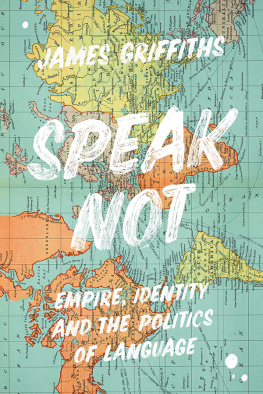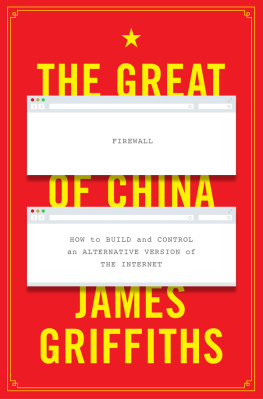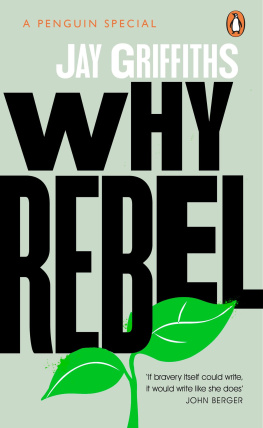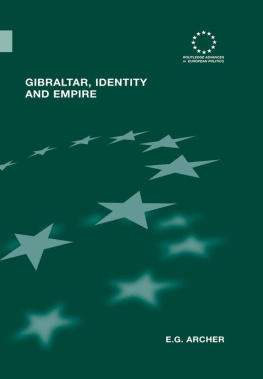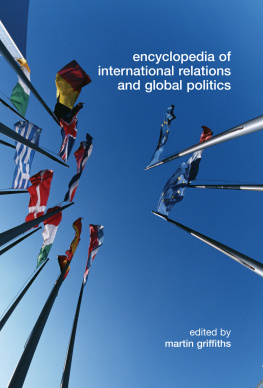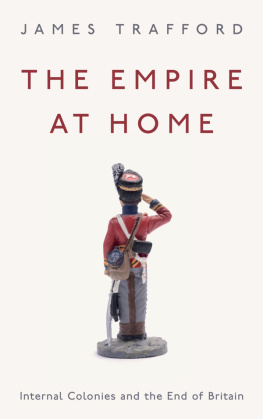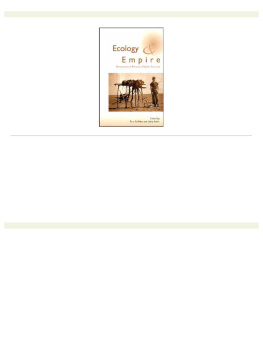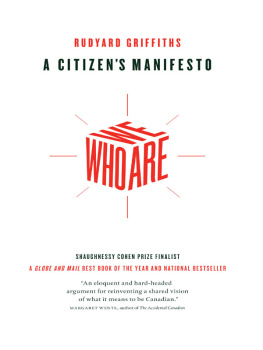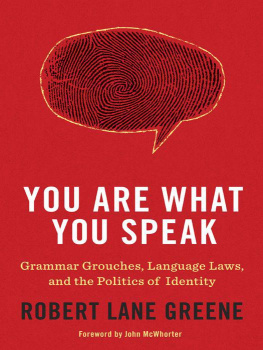James Griffiths - Speak Not: Empire, Identity and the Politics of Language
Here you can read online James Griffiths - Speak Not: Empire, Identity and the Politics of Language full text of the book (entire story) in english for free. Download pdf and epub, get meaning, cover and reviews about this ebook. year: 2021, publisher: Bloomsbury, genre: Home and family. Description of the work, (preface) as well as reviews are available. Best literature library LitArk.com created for fans of good reading and offers a wide selection of genres:
Romance novel
Science fiction
Adventure
Detective
Science
History
Home and family
Prose
Art
Politics
Computer
Non-fiction
Religion
Business
Children
Humor
Choose a favorite category and find really read worthwhile books. Enjoy immersion in the world of imagination, feel the emotions of the characters or learn something new for yourself, make an fascinating discovery.
- Book:Speak Not: Empire, Identity and the Politics of Language
- Author:
- Publisher:Bloomsbury
- Genre:
- Year:2021
- Rating:3 / 5
- Favourites:Add to favourites
- Your mark:
- 60
- 1
- 2
- 3
- 4
- 5
Speak Not: Empire, Identity and the Politics of Language: summary, description and annotation
We offer to read an annotation, description, summary or preface (depends on what the author of the book "Speak Not: Empire, Identity and the Politics of Language" wrote himself). If you haven't found the necessary information about the book — write in the comments, we will try to find it.
James Griffiths: author's other books
Who wrote Speak Not: Empire, Identity and the Politics of Language? Find out the surname, the name of the author of the book and a list of all author's works by series.
Speak Not: Empire, Identity and the Politics of Language — read online for free the complete book (whole text) full work
Below is the text of the book, divided by pages. System saving the place of the last page read, allows you to conveniently read the book "Speak Not: Empire, Identity and the Politics of Language" online for free, without having to search again every time where you left off. Put a bookmark, and you can go to the page where you finished reading at any time.
Font size:
Interval:
Bookmark:

On the northern edge of Cathays Park, a short walk from the grounds of Cardiff Castle, stands the Welsh National Temple of Peace and Health, an ostentatiously large, three-storey art deco building constructed of grey limestone. Built in the 1930s, aspirations for the temple were as outsized as its appearance, chief among them that international cooperation and understanding could prevent another devastating war. The temples opening ceremony included speeches by the mothers of those who died in the trenches of France and Belgium, and a wing of the building was dedicated to the work of the League of Nations. Another goal was a more local one, shared by the other occupants of Cathays Park, from the baroque, domed City Hall, to the National Museum and war memorial. All were situated on King Edward VII Avenue, named for the ruler who first declared Cardiff a city in 1905, and spoke to a dream of future glory, of transforming the one-time coal port, eclipsed both in culture and pedigree by the ancient northern towns of Caernarfon and Aberystwyth, into the first city of Wales, and future national capital. and it was not until the turn of the millennium that Wales would achieve any real measure of self government, making this anything more than ceremonial. And less than a year after the temple opened to the public, the League of Nations disintegrated, as the world was plunged once again into war.
Twenty-nine years after that opening, almost to the day, conflict came to the steps of the temple itself. In the early hours of 17 November 1967, as a bitter gale blew through the city and frost covered the ground, The blast ripped a hole in the front of the temple, throwing chunks of masonry into the air and blowing apart the two-and-a-half-metre tall metal doors. Bronze window frames were torn asunder, glass disintegrating, as much of the furniture inside the greeting hall was splintered beyond recognition. Across the street, all the plate glass windows of the Welsh Board of Health were blown out, as were those of the National Museum, over half a kilometre away. The sound of the blast was heard throughout the city, rousing people from their beds and sending dogs barking, soon to be followed by the wail of sirens.
It wasnt a particularly complicated bomb, as explosives go, but it was a set-up Jefferies would become deeply familiar with.
The 1960s were a decade of growing nationalism and economic uncertainty in Wales. Unemployment was on the rise, as coal pit closures left thousands out of work, and by 1970, for the first time in over a century, there would be more people working on the land than under it. caused in part by numerous overseas misadventures. While support for Labour was strong in Wales, particularly in the socialist mining towns of the south, discontent with the ruling class in general was growing.
The modern Welsh nationalist movement had been kickstarted in 1957, when the British Parliament voted to approve a plan to drown the Welsh valley of Tryweryn, including the ancient village of Capel Celyn, to create a reservoir that would supply water to the English city of Liverpool. Some protesters held a banner reading, FWA, for action, not words.
Words, however, were what the FWA was best at. Founded by Julian Cayo Evans, a Lampeter horse-breeder, the army never consisted of more than a handful of members, and spent far more time courting press attention than challenging the British state. Evans was a master publicist, staging elaborate training exercises for journalists in the hills around his farm, boasting of plans for guerrilla warfare and traveling to Dublin to join a march on the fiftieth anniversary of the Easter Rising. For all his growing fame, the authorities did not take him seriously, and Evans and his men were permitted to operate relatively unmolested, an army without an enemy.
That ambivalence began to shift however after the government announced plans to hold a grand ceremony at Caernarfon Castle for the investiture of the Queens eldest son, Charles, as prince of Wales on 1 July 1969. For Wilsons government, the ceremony which would be broadcast live on television was a chance to focus the worlds attention on the newly modernizing, post-industrial Britain that they were creating. It was to be preceded by a year-long campaign designed to increase Welsh support for the monarchy and stamp down growing nationalism. As part of the preparations, Charles was to be sent to the University of Wales in Aberystwyth, where he would study Welsh language and history.
Many nationalists were outraged. The last native ruler of Wales Llywelyn Ein Llyw Olaf, Llywelyn the last had died in 1282, during the countrys conquest by Edward I, who appointed his son as prince of Wales soon after. For many Welsh patriots, the position was a symbol of English subjugation, and holding a grand ceremony to reinforce Charless title showed indifference to Welsh opinion and history, something the young prince did not help by asking a protester, on arrival in Aberystwyth, who the Llywelyn on his sign referred to. Protests dogged plans for the investiture from the beginning, led in part by Cymdeithas yr Iaith Gymraeg, the Welsh Language Society, which had vowed to block the ceremony, along with Plaid Cymru, the Welsh nationalist party.
In November 1967, the Temple of Peace was due to host the first meeting of the committee organizing the ceremony, led by Anthony Armstrong-Jones, husband of Princess Margaret, who had been made the earl of Snowdon following their marriage. When Snowdon arrived at the temple shortly after the bombing, he was greeted by Cymdeithas protesters, who held up banners proclaiming No Prince, and Republic, Not Royalty. Fourteen people were arrested in scuffles with police, which failed to prevent Snowdon and other dignitaries entering the building.
The explosives for that operation were provided, though without the knowledge of the eventual recipients, by the true culprits behind the Temple of Peace attack: a shadowy group known to the few who were aware of its existence by the initials MAC, for Mudiad Amddiffyn Cymru, the Movement for the Defence of Wales.
Like the FWA, MAC had its roots in the anger over Tryweryn. The attack on the reservoir work site in 1963 that resulted in the destruction of a transformer was the work of MAC founders Emyr Llywelyn Jones, Owen Williams and John Albert Jones. These were not sophisticated terrorists however, and all three men were soon arrested, after Emyr Llywelyn Jones left a handkerchief with an incriminating letter E embroidered on it at the scene. If this was his goal, it failed at stopping the reservoir being opened, as did all other protests at the time.
With its founders in prison, command of MAC passed to John Barnard Jenkins, a sergeant in the Royal Army Medical Corps. A non-descript man of medium height, medium build and a bland, long face, the only thing that stood out about Jenkins were his slightly larger than average ears. He did not attract attention, and this was perfect for MACs purposes. Unlike the FWA, whose flashy antics he found embarrassing, Jenkins stayed in the background, reconfiguring MAC into a true militant organization, with small cells around the country and a commitment to absolute secrecy.
It was clear to the security services by the time of the Temple of Peace bombing that a more serious organization had stepped onto the scene.
Moreover, the fact that a bomb was used to protest against a meeting arranged to prepare for the investiture of the Prince of Wales carries with it the threat that the same means of protest will be used again as arrangements for the Investiture proceed and there is the danger that the consequences of this could be very serious indeed, Daniel wrote, adding the culprits would appear to be a small group with expert (perhaps ex Army) knowledge of bombs and access to explosives. They are also likely to be Welsh speaking and to have links with extreme nationalist and Welsh language movements.
Next pageFont size:
Interval:
Bookmark:
Similar books «Speak Not: Empire, Identity and the Politics of Language»
Look at similar books to Speak Not: Empire, Identity and the Politics of Language. We have selected literature similar in name and meaning in the hope of providing readers with more options to find new, interesting, not yet read works.
Discussion, reviews of the book Speak Not: Empire, Identity and the Politics of Language and just readers' own opinions. Leave your comments, write what you think about the work, its meaning or the main characters. Specify what exactly you liked and what you didn't like, and why you think so.

